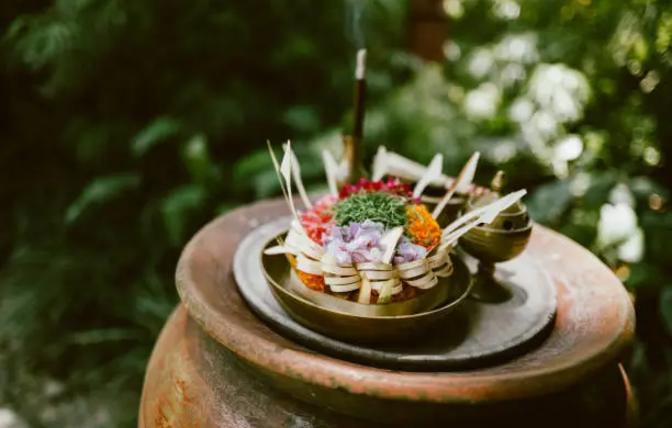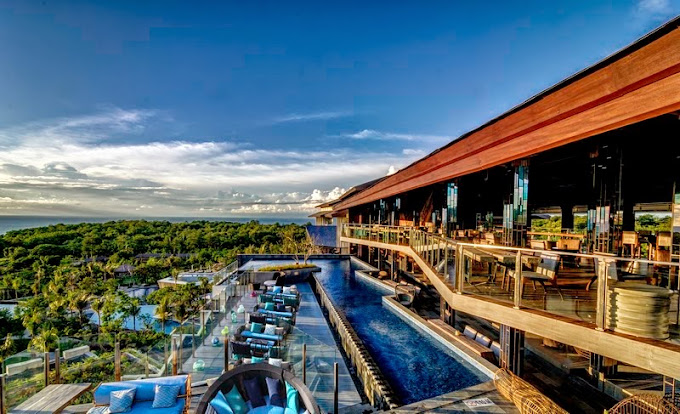

Introduction to Balinese Spiritual Culture
Bali is not merely a tropical paradise—it's a spiritual island where Hindu faith permeates daily life. From morning offerings to grand ceremonies, the island's distinctive rituals are an introduction to the Balinese spirit. Among them, the Balinese purification rituals are remarkable, providing tourists with an unforgettable spiritual experience that is healing and transformational.
What Are Balinese Purification Rituals?
A Deeply Rooted Spiritual Cleansing Tradition
Balinese cleansing ceremonies, or Melukat, are sacred rites designed to purify the body, mind, and spirit. These rituals are based on the Balinese Hindu philosophy of Rwa Bhineda, a balance of opposites.Melukat is used to eliminate spiritual impurities, negativity, and blockages, allowing harmony between a person and his environment.
Types of Purification Ceremonies
Melukat: The most popular ritual utilizing holy spring water to cleanse and purify the aura.
Panca Wali Krama: A more elaborate purification ritual carried out at significant temples every decade.
Melasti: Done prior to Nyepi (Balinese New Year), this is a collective ritual to cleanse holy items and people at the sea.
Why Tourists Take Part in Purification Rituals
Visitors approach Melukat ceremonies for numerous purposes: spiritual development, emotional recovery, or merely connecting with Balinese heritage. Attending these rituals gives a glimpse into Balinese religion, making it a common tourist destination for wellness tourists, culture lovers, and spirituality explorers.
Spiritual Gains of Melukat
Liberation from emotional weights
Clearer mind and intentions
Restored inner peace
Increased energy flow and vibrancy
Where to Find Balinese Purification Rituals
Tirta Empul Temple (Gianyar)
Tirta Empul is the most popular place to be purified. In Tampaksiring village, this 10th-century temple is constructed around a holy spring that is said to possess supernatural healing powers. Locals and travelers visit for Melukat by bathing in its 13 spouts representing various blessings.
Tirta Sudamala (Bangli)
Less touristy than Tirta Empul, Tirta Sudamala provides a peaceful and less crowded place for cleansing. Situated in a dense forest along Bangli, this holy spring offers a tranquil atmosphere for spiritual revival.
Sebatu Holy Spring
In Tegalalang, it is one of the favorite tourist spots for visitors who are lodging close to Ubud. It has thick vegetation and concealed paths that provide a strong but serene cleansing experience.
How to Prepare for a Balinese Purification Ritual
Respect the Sacredness
Purification rituals are religious, and travelers must approach them with humility and respect. These are things that you must remember:
Dress up: Sarong and sash are required (usually supplied at the temple).
No menstruation: Women who are menstruating cannot approach the sacred places.
Shower beforehand: Show up clean, both mind and body.
Offerings and prayers: Most ceremonies include canang sari (flower offerings) and prayers with a pemangku (priest).
Guided vs. Solo Experiences
It is allowable to attend alone, but joining a guided ceremony with a local priest or healer guarantees you gain the spiritual background and ritual procedures. Private purification packages are available at most hotels and wellness retreats in Ubud, Seminyak, and Canggu.
Step-by-Step Guide to the Melukat Ceremony
1. Mantra and Blessing Recitation
The ceremony starts with offerings and prayers at the shrine of the temple. A priest calls upon the gods by reciting chants and mantras, requesting permission and blessings to start purification.
2. Offering to the Locals
Small palm-leaf baskets and flowers are presented to local spirits and deities as tokens of gratitude and surrender.
3. Holy Water Purification
Volunteers move on to the sacred fountains or pools. At every spout:
Wash your face and hands
Splash water on your body and head
There are some spouts that are meant for some purpose such as love, health, or good fortune
4. Last Blessing and Rice Ritual
At the end of the bath, there is a last blessing. The priest applies tirtha (sacred water) on your head and gives bija (blessed rice) to be kept on the forehead as an emblem of spiritual acceptance and cleansing.
Etiquette and What to Expect
Photography: Always request permission before snapping a photo. Refrain from disruptive behavior at ceremonies.
Donations: A small donation (dana punia) is appreciated and expected.
Language Barrier: English-speaking guides can describe the symbolism of each step for better comprehension.
Best Time to Join a Purification Ritual
The dry season, from April to October, is the most pleasant time to go to the temples. However, ceremonies are held year-round. To avoid crowds and experience a more authentic session, visit early in the morning on weekdays.
Combine with Other Spiritual Experiences
For a deeper journey, tourists can combine Melukat with:
Balinese Healing Sessions
Chakra Balancing at wellness retreats
Yoga and Meditation in Ubud
Sound Healing Ceremonies
These activities reinforce the impact of the purification and establish an overall spiritual getaway to Bali.
Final Thoughts: A Journey Within
Attending a Balinese purification ritual is not just a cultural experience—it's a sacred encounter with the mystical power of the island. It enables travelers to purge bad energy, reconnect with their inner selves, and enter a state of higher awareness. If you're looking for peace, healing, or just an unforgettable experience, this ritual delivers a deeply transformative experience.
Tip: When in Bali, do not just visit the beaches—dive into its soul.

